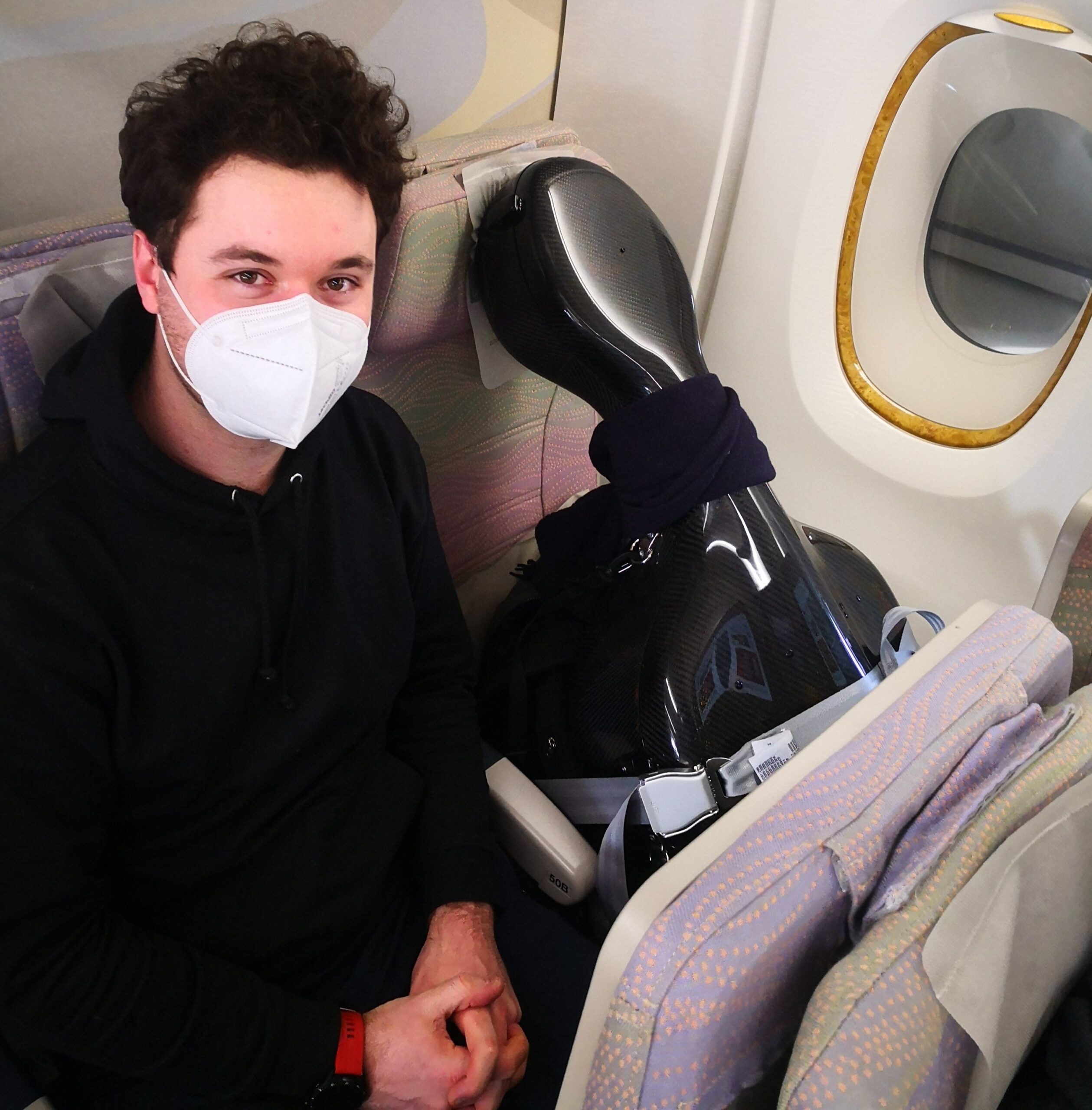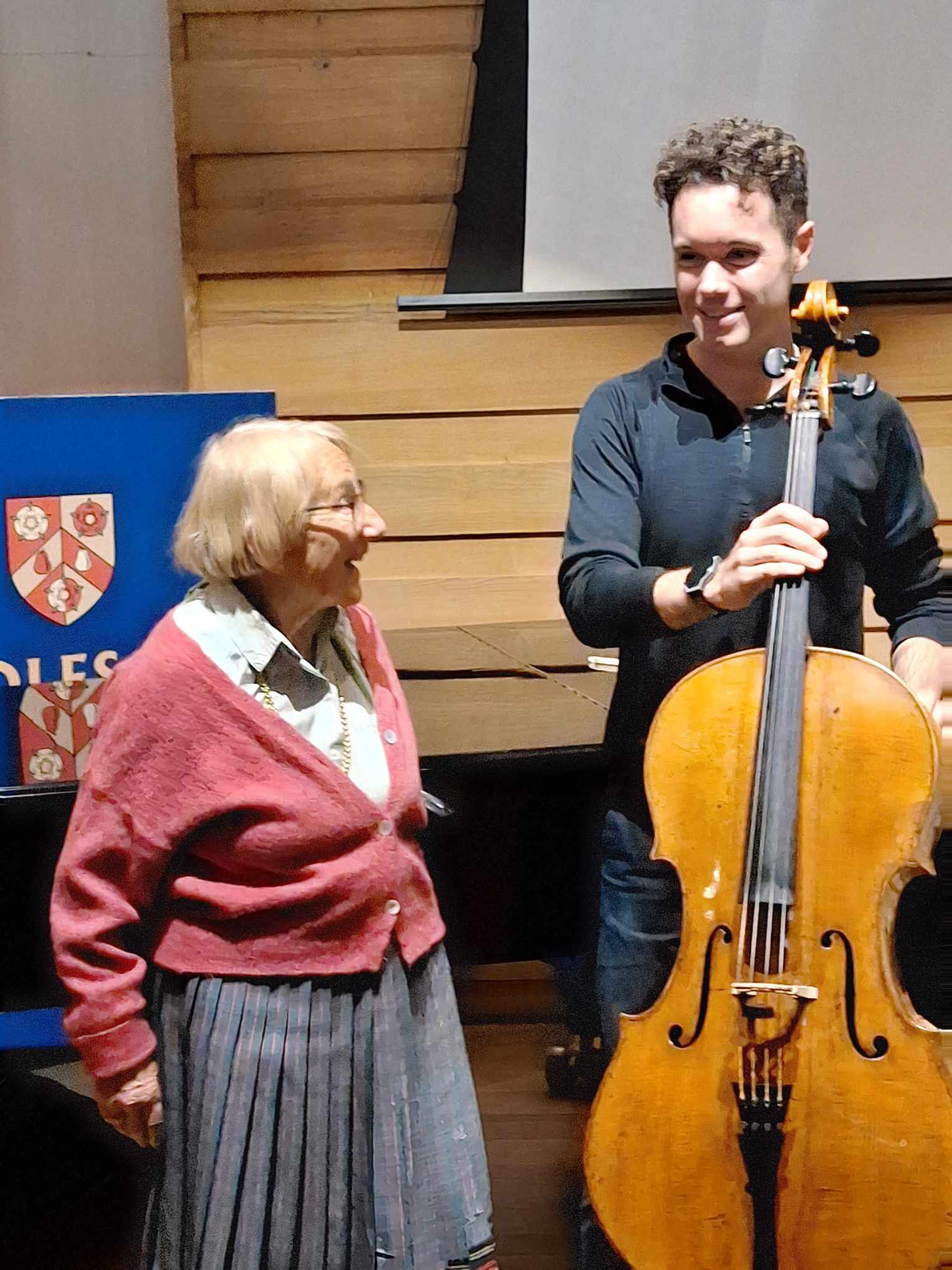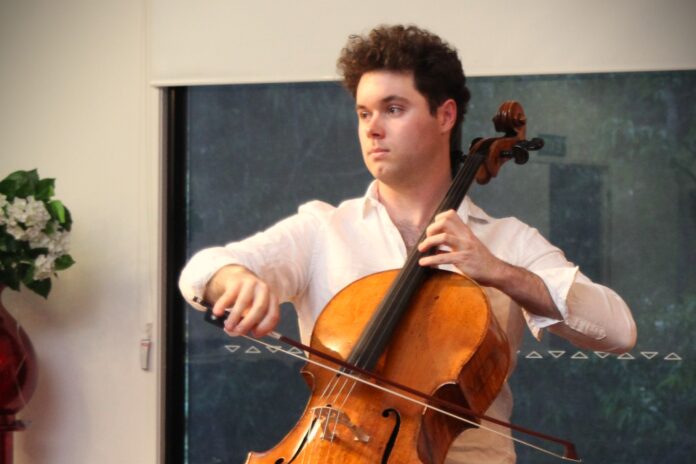In an almost unbelievable chain of events, a 300-year-old cello that went missing in the decades after the murder of its owner in World War II has been recovered, thanks to the determined sleuthing of a handful of classical music lovers.
And, it turns out, a heartfelt and innocent performance by Montville-born cellist Sam Lucas has been critical to the circa-1720 Nicolo Gagliano cello being re-identified and the secrets of its disappearance finally being answered.
The rediscovery also allowed for the orphaned daughter of the original owner to once again hear the beloved cello’s rich tones – fulfilling a wish many decades in the waiting.
“This is definitely one of the most meaningful and deeper moments for my career, and more personal moments as well,” Sam said of his role in the mystery being solved.
“It’s rather emotional to be honest.”
History shows the beautiful cello was purchased in the 1920s for brilliant young Jewish soloist Pal Hermann, who performed internationally for many years until he was arrested by the German secret police in 1944.
The young man was among the six million Jews eventually murdered in the Holocaust. His then seven-year-old daughter Corrie thankfully survived the war.
The story goes that, in a daring move, the cello was saved from the Nazis by a relative who broke through a back window of the family home to snatch the Gagliano from virtually under the noses of the treasure-hunting Germans, replacing it with a lesser instrument.
The daring ‘thief’ made his escape, riding away on his bike, into a foggy night, with the cello strapped to his back.

The cello was subsequently sold in 1952 to a German cellist known as Herzbruch. In the 1960s, the cello was again on-sold to an unknown buyer, and this is where the tracking of its journey turned cold.
Until this year.
London-based cellist and author Dr Kate Kennedy has for the past four years researched and searched for the cello, in partnership with her colleague Robert Brewer Young, a director of both W.E. Hill and Sons and Beares Violin Dealers in London.
They had repeatedly put out calls globally for anyone who may have any clues – no matter how small – as to its whereabouts. But Dr Kennedy’s search remained for many years unsatisfied.
Meanwhile, Sam continued building his reputation globally as a star classical musician, and was loaned a beautiful handcrafted cello by the Robert Schumann Hochschule in Dusseldorf, where he is a student.
The cello, with its distractive engravings, subsequently travelled with him to performances around the globe – so valuable that insurers insisted it had its own seat on international flights.
“I was always intrigued. Not only is it a rare instrument, but it has incredible sound,” Sam explained in early 2022.
“I don’t have to try as hard to make the sound I like – you could say it has 300 years of experience of sound going through it, and 300 years of being played by great players. This has given the cello a beautiful tone … and it is simply very lovely to play.
“I wanted to have the experience of discovering how my playing would develop, I guess you could say, in the hands of another cello.
“We were lucky and found this instrument; it has been loaned to me for the next couple of years, hopefully longer, and I’m delighted.”
Among its travels, the cello visited Sam’s hometown Montville in February 2022, where he performed to the joy of local music lovers in the intimate and beautiful auditorium of Lucas Parklands.
Even then, the priceless cello with its rich tone developed in the hands of masters over hundreds of years proved a magnetic point of interest.
The clear and unique markings suggested it had been crafted in Naples for the Italian royal family in the early 1700s, hence its very significant historic and musical value. One of its distinctive design elements is an inscription in Latin burnt onto its ribs that reads, ‘Ego Sum Anima Musical’, meaning ‘I am the soul of music’.

Eventually Italy was unified in 1861 and many great treasures, including this cello, were handed to its new king, Victor Emmanuel II.
That homecoming concert was a prelude and preparation for the finals of the Queen Elisabeth International Cello Competition, the biggest competition of its kind in the world that year, held in Brussels in May and June 2022. Sam was the only cellist from the Southern Hemisphere to be invited to play in the event, which was open to the world’s 50 leading cellists under 32 and selected from 350-plus applicants.
It was his performances at this international event that inadvertently helped lead to the unravelling of this musical mystery that had for many decades remained unsolved.
Fast forward two years and Dr Kennedy, who had been researching several historically significant cellos – including the missing Nicolo Gagliano – realised the publishing of her book, Cello: A Journey Through Silence to Sound.
Her work founds its way into the hands of a curious reader, renowned Chinese cellist Jian Wang. After reading the words about the missing Nicolo Gagliano, Mr Wang became quite convinced that he had seen that very cello in action.
And indeed he had.
“Wang had been on the jury when Sam performed in the Queen Elisabeth Cello Competition in 2022,” Dr Kennedy wrote recently in an email forwarded to Sam.
“He recognised the cello from my description, and from photographs in the book, and contacted (renown British) cellist Julian Lloyd Webber, who put us in touch.”
Mr Wang had inadvertently helped provide vital pieces to a very long-lingering puzzle. And Sam had also played a small but exciting role.
“I always knew this cello had an amazing history at the time it was built,” Sam said.
“There is a lot of history behind this particular cello, and I’m honoured to have … experienced some wonderful performances playing this instrument.”
But the story doesn’t end there.
“Throughout the writing of the book, I lived in hope that we would identify the cello, and the book would end with a description of it being played to Corrie, the orphan Pal Hermann left behind,” Dr Kennedy explained in her email.
And that dream has now also come true.
Corrie Hermann, now in her 80s, made the trip from her home in Holland for what turned out to be a wonderful surprise.
On September 28, Dr Kennedy joined her for an interview on BBC Radio 4 – the subject was the missing Nicolo Gagliano cello, and the surprise for Corrie that it had again been found.
Sam had the honour of playing for Corrie, fulfilling her dream to hear her father’s cello once again, for the first time in an estimated 85 years.

“It’s beautiful,” Corrie told the BBC’s radio audience.
“I’m really thrilled to hear this because, well, it is more than I could have expected. Thank you so much.”
A special cello concert to launch the book was also held at Wigmore Hall in London on September 29, with Sam again playing the cello. The concert also featured performances by Dr Kennedy and Berlin-based cellist Natalie Clein.
The concert included for the finale the piece Popper Requiem for three cellos and piano, a German piece reflecting war.
“It has been her wish to see and hear the cello played again,” Sam said.
“For Corrie to see and hear the cello unexpectedly was an emotional situation for everyone … I am extremely grateful and honored to be the cellist to reunite her to the cello and to the sound she grew up with.”
Help keep independent and fair Sunshine Coast news coming by subscribing to our FREE daily news feed. All it requires is your email below.





